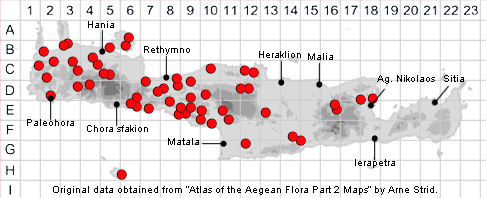
SPECIES DESCRIPTION
LINARIA PELISSERIANA
Family and Genus:- See- PLANTAGINACEAE
Common Names:- Jersey toadflax
Homotypic Synonyms:- Antirrhinum gracile, Antirrhinum pellicerianum,
Antirrhinum violaceum, Linaria ciliata.
Meaning:- Linaria (Gr) Flax-like.
Pelisseriana (L) For Guillaume Pelisser, sixteenth-century Bishop of
Montpellier.
General description:- Greyish green, short to medium, rather delicate annual.
Stems:-
1) 15-50 cm, erect, few, usually simple.
Leaves:-
1) Basal, whorled or opposite.
2) Cauline, alternate, simple, linear, 40mm, length at most, erect against the stem,
pointed.
Flower:-
1) Racemes, dense, up to 5 cm in fruit.
2) Pedicels, 3-6·5 mm, about equalling bracts.
3) Calyx, 4-5 mm:
a) lobes, linear-lanceolate, subequal.
4) Corolla, 15-20 mm, purplish-violet with whitish palate;
a) upper lip, very long, with parallel lobes; throat more or less closed.
b) spur, 7-9 mm.
Fruit:-
1) Capsule, 2·5-3 mm.
2) Seeds, 1-1·2 mm, suborbicular, flat; disc smooth, black;
a) wing, fimbriate, pale.
Key features:-
1) Corolla, 15-20 mm.
2) Wing of seed, lacerate or fimbriate.
3) Pedicels, at least 3 mm in flower.
Habitat:- Pastures, open woodland, fallow fields, olive groves, dry open shrubby
vegetation . 0-800(-1200) m.
Distribution:- Throughout Greece. - W & S Europe, Mediterranean region from
Spain to Cyprus and Lebanon, scattered in Anatolia and perhaps further east. Fairly
well spread and common in C and W Crete rarer in the east.
Flowering time:- Late Mar to mid-June.
Photos by:- Steve Lenton
